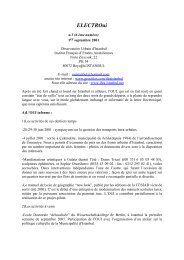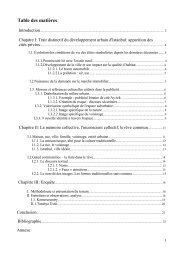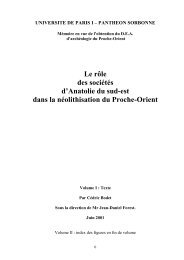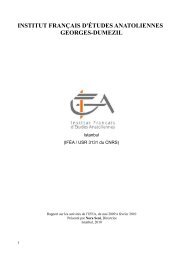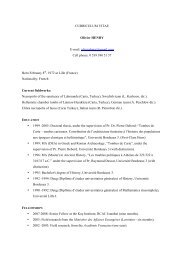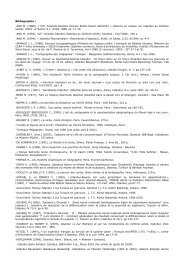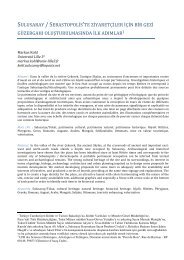Télécharger le volume complet (PDF, 15Mb) - IFEA
Télécharger le volume complet (PDF, 15Mb) - IFEA
Télécharger le volume complet (PDF, 15Mb) - IFEA
Create successful ePaper yourself
Turn your PDF publications into a flip-book with our unique Google optimized e-Paper software.
58<br />
GAILHARD<br />
• Furnace and workshop: archaeological evidences and experimental interpretation;<br />
• Traceology and understanding of temperatures, key e<strong>le</strong>ments of the metallurgy.<br />
As a result, it appears that this transition between Bronze and Iron metallurgies is established during the Bronze<br />
Age. Several factors may explain the gradual shift from one technique to another. We are particularly interested in<br />
the relationship between copper ores and those of iron. We will see the ro<strong>le</strong> that flows with a high concentration of<br />
iron can have in the reduction of copper ore (as in black sand of the Black Sea). Iron-‐working technology was<br />
therefore developing during most of the Bronze Age, but the beginning of the Midd<strong>le</strong> Iron age should properly be<br />
drawn at the time when everyday objects were mostly made from iron. In this paper I will try to show how we can<br />
study the history of metalworkers and see how these men are highly specialized. In fact, a technology dealing with<br />
such masses of material cannot be individual, but on the contrary the fact of a team whose body language and<br />
communication are synchronized by the rhythm of the structure during operation. And if differences exist<br />
between Bronze and Iron, metalwork’s have the same sensibility and conception of roots materials.<br />
Keywords: Bronze Age, Iron Age, metallurgy, iron, archaeology of technics, experimental archaeology, Anatolia




